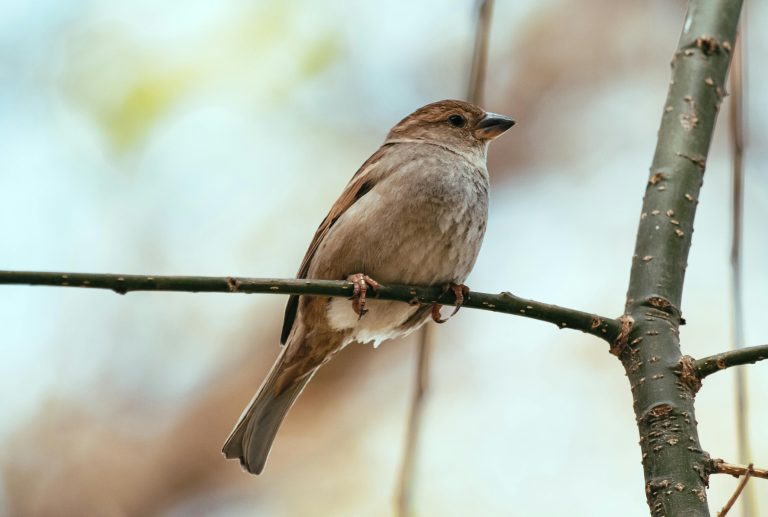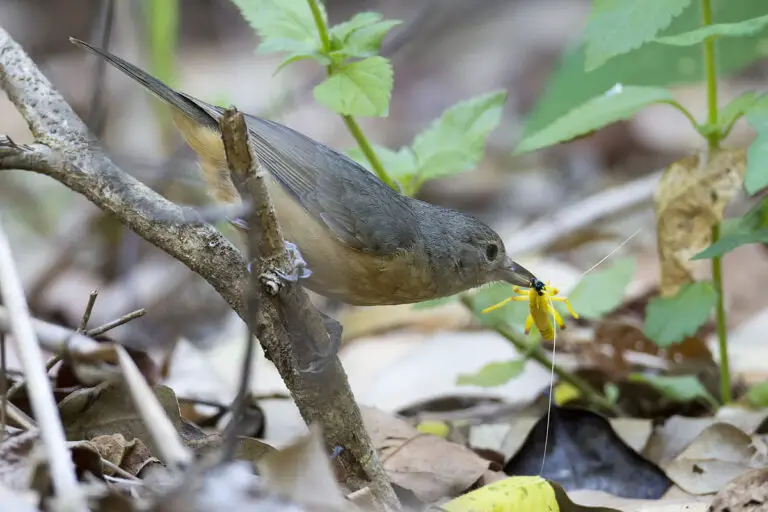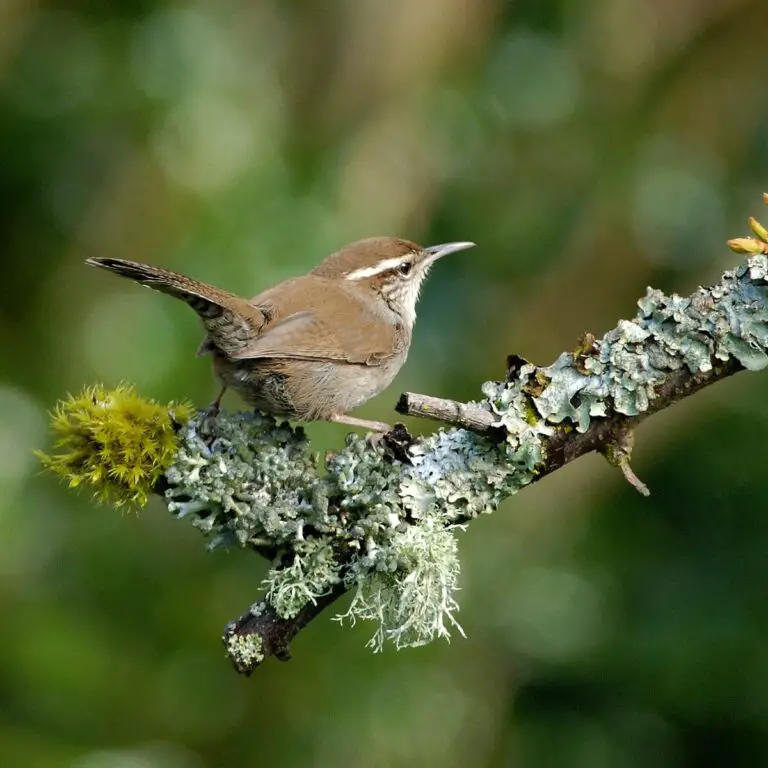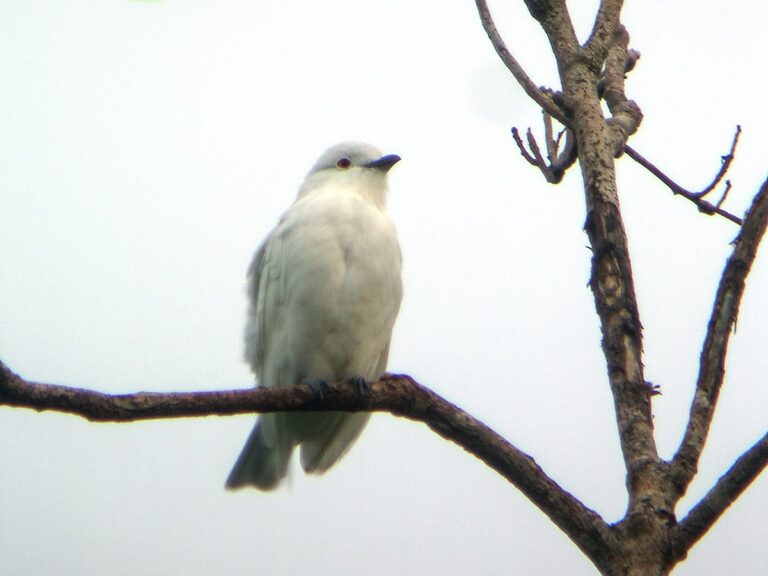Xeme (Sabine’s Gull)
“They follow after seals and whales to eat their scraps.”
Here’s the scientific classification and conservation status of the Xeme, also known as Sabine’s Gull:
Scientific Classification:
- Kingdom: Animalia
- Phylum: Chordata
- Class: Aves
- Order: Charadriiformes
- Family: Laridae
- Genus: Xema
- Scientific Name: Xema sabini
Conservation Status: Least Concern
Locations: Xemes, or Sabine’s Gulls, are found in Eurasia, Europe, and North America.
As a member of the Laridae family, Xemes share characteristics with other gull species, while their unique genus, Xema, distinguishes them taxonomically. Despite being classified as Least Concern, continued monitoring and conservation efforts are essential to ensure the well-being of Xeme populations, especially in the face of potential threats such as habitat loss and pollution.
Here are some facts about the Xeme, or Sabine’s Gull:
- Prey: Xemes primarily feed on fish, crustaceans, insects, and offal.
- Name of Young: Chicks
- Group Behavior: Social; they are often found in groups.
- Fun Fact: Xemes follow after seals and whales to eat their scraps.
- Estimated Population Size: Approximately 2,000 to 2.1 million individuals.
- Biggest Threat: Climate change and habitat loss pose significant threats to Xeme populations.
- Most Distinctive Feature: Long, pointed tri-colored wings.
- Distinctive Feature: Small heads and slender bills.
- Wingspan: Typically 32 to 34 inches.
- Incubation Period: Eggs are incubated for 23 to 25 days.
- Age of Fledgling: Xeme chicks are considered fledglings at one day old.
- Habitat: Xemes inhabit Arctic tundra and marshy tundra near the coast.
- Predators: Peregrine falcons are among the predators of Xemes.
- Diet: Xemes are carnivores.
- Lifestyle: Diurnal; they are active during the day.
- Type: Bird
- Common Name: Sabine’s gull
- Number of Species: There are four known species of Xeme.
- Location: Xemes are found in North America and Europe.
- Average Clutch Size: Typically two eggs.
- Nesting Location: They nest on the ground on islands or the edges of ponds.
- Age of Molting: Xemes start molting at around two years of age.
- Migratory: Yes, Xemes are migratory birds.
Physical Characteristics:
- Color: Grey, yellow, red, black, white
- Skin Type: Covered in feathers
- Lifespan: Up to 8 years
- Weight: 4 to 7 ounces
- Length: 10 to 13 inches
- Age of Sexual Maturity: Around 2 years old
Summary
The Xeme, or Sabine’s gull, is a small gull species found in both North America and Europe. During the breeding season, Xemes inhabit the Arctic region, where they nest and raise their young. However, they are migratory birds, and during the non-breeding season, they undertake long migrations over oceans to spend winters in more tropical waters.
Xemes are often observed flying low over the sea and foraging in shallow ponds and tidal flats. Their diet consists of a variety of prey, including insects and fish, which they catch while wading in shallow waters.
This gull species is highly social, often forming large flocks, particularly outside the breeding season. They mate for life, displaying strong pair bonds with their partners. During the breeding season, Xemes can be found nesting in the Arctic tundra, where they build their nests on the ground, typically on islands or the edges of ponds.
The Xeme is an adaptable and resilient bird, capable of navigating long migrations and exploiting various habitats for foraging and nesting. Its social nature and strong pair bonds make it a fascinating species to study, providing valuable insights into avian behavior and ecology.

5 Amazing Xeme Facts
The Xeme, or Sabine’s gull, primarily resides on the Arctic tundra for most of the year, using this habitat for breeding and nesting purposes. During this time, they construct their nests on the ground, typically on islands or near pond edges.
One interesting behavior of the Xeme is its tendency to follow after seals and whales to scavenge for food scraps. This scavenging behavior allows them to capitalize on opportunities for additional food resources.
Xemes are also known to gather in groups occasionally to engage in displays and emit their distinctive squeaky, high-pitched calls. These social gatherings may serve various purposes, including communication, courtship, and territorial defense.
Remarkably, the young of Xemes are born in an advanced state and are capable of feeding themselves shortly after hatching. This early independence is advantageous for the survival of the chicks in the harsh Arctic environment.
Lastly, Xemes have been observed engaging in nest predation, where they rob other birds’ nests to feed on their young. This behavior, while seemingly aggressive, is a survival strategy employed by Xemes to obtain additional food sources for themselves and their offspring.
Where to Find Xeme
The Xeme, also known as Sabine’s gull, is distributed across a wide range of countries in North America and Europe, totaling over 25 nations. Among the countries where it can be found are Iceland, Greenland, Canada, Russia, and Germany.
During the breeding season, Xemes inhabit the high Arctic regions, including the Arctic tundra, where they establish their nests and breed. They are particularly prevalent in areas characterized by marshy tundra near the coast, where ponds and tidal flats are abundant, providing suitable nesting and foraging grounds.
As migratory birds, Xemes undertake extensive migrations across oceans during the fall and winter months. They migrate to warmer seas near coastlines, where they spend the winter season. During migration and wintering periods, Xemes primarily inhabit the open sea, typically remaining within a few miles offshore.
This migratory behavior allows Xemes to exploit a diverse range of habitats throughout the year, from the Arctic tundra to coastal marshlands and offshore waters, demonstrating their adaptability and resilience in diverse environments.
Xeme Nest
Sabine’s gulls, during the breeding season, typically choose breeding sites on tundra landscapes. They construct their nests along the edges of ponds, on islands within ponds, or in marshy shore areas.
The nests are typically situated in shallow depressions within vegetation or gravel, providing a secure spot for incubating eggs and raising chicks. Occasionally, the gulls may line the insides of their nests with materials such as grass, algae, and feathers, adding insulation and comfort for the eggs and young chicks.
This nesting behavior reflects the adaptability of Sabine’s gulls to utilize various nesting substrates and materials to create suitable nesting sites in their breeding habitats. These nesting sites provide protection and security for the breeding pair and their offspring during the critical breeding season on the tundra.
Scientific Name
The Xeme, also known as Sabine’s gull (Xema sabini), is a member of the Laridae family, which encompasses various seabirds such as gulls, terns, and skimmers. Within the Laridae family, the Xeme stands out as the only species belonging to the Xema genus.
This distinctive gull species exhibits a unique taxonomic position, with four recognized subspecies, each adapted to different geographic regions and habitats. Despite its close relation to other gull species, the Xeme displays specific morphological and behavioral characteristics that set it apart as a distinct and remarkable member of the Laridae family.
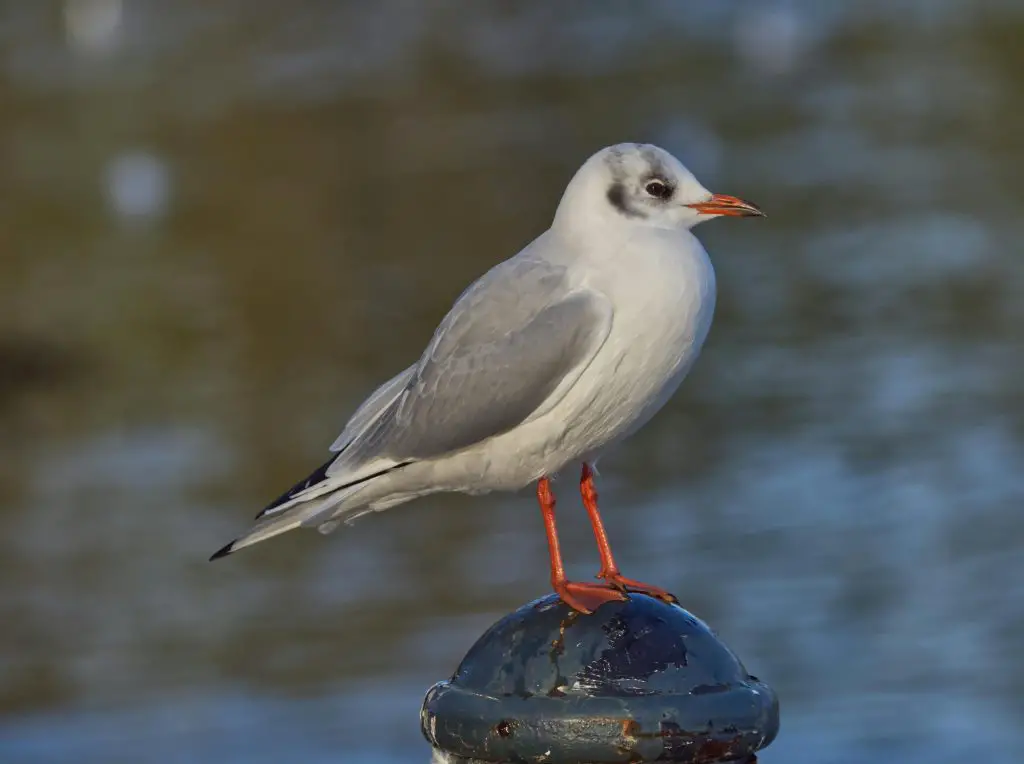
Size, Appearance, & Behavior
The Xeme, or Sabine’s gull, is a diminutive gull species, measuring between 10 to 13 inches in length and weighing approximately four to seven ounces. Their wingspan typically ranges from 32 to 34 inches. They are characterized by a small head, a slender bill, and long, pointed wings.
Breeding adults of the Xeme display distinctive plumage features. They have white bodies with gray heads bordered in black. Their wings exhibit three colors: gray wing coverts, black primary flight feathers, and white secondaries. Additionally, breeding adults possess a red eyering and black beaks with yellow tips.
During the nonbreeding season, adult Xemes may exhibit white speckles on their heads, while juveniles are identified by their brown plumage with pale feather edges and entirely black bills.
Socially, Sabine’s gulls are relatively gregarious birds, forming long-term mate bonds and often congregating in flocks or groups, particularly during winter and spring. They are commonly observed foraging along coastlines, where they may gather in groups to display and emit their distinctive squeaky, high-pitched calls.
In flight, Xemes exhibit a buoyant flight style reminiscent of terns, characterized by deep wing beats as they fly low over the sea. This flight behavior allows them to efficiently forage for food and navigate their coastal habitats.
Migration Pattern and Timing
Xemes are characterized as short to long-distance migrants, embarking on extensive journeys between breeding and wintering grounds. During the breeding season, they inhabit high Arctic regions, including extreme northern areas of Canada and Greenland. However, when the seasons change, Xemes undertake remarkable migrations over oceans to reach their wintering destinations.
In North America, Xemes migrate over the Pacific Ocean, generally staying close to the coastline. Their wintering grounds are located in warmer tropical waters off the coast of Mexico and Central America. This migratory pattern allows Xemes to exploit a diverse range of habitats throughout the year, from the Arctic tundra to coastal and offshore waters, showcasing their remarkable adaptability and resilience across different environments.
Diet
Sabine’s gulls are carnivorous birds that primarily forage on the surface of the water. Their diet consists of various prey items typically found in marine environments, including fish, crustaceans, and other small aquatic organisms. Sabine’s gulls are often observed swooping low over the water’s surface, picking off prey with quick and agile movements. Their ability to forage efficiently on the water’s surface allows them to obtain the necessary nutrients to sustain their energy requirements during their breeding and migration periods.
What Does Xeme Eat?
Sabine’s gulls are versatile carnivores, with a diet that includes a variety of prey items depending on the season and availability. During the summer months, when they breed in Arctic regions, their diet primarily consists of aquatic insects, larvae, crustaceans, small fish, mollusks, and marine worms. Additionally, they may opportunistically prey on eggs and nestlings from other bird species and steal fish from Arctic terns.
Their foraging behavior is diverse, as they walk along the edges or swim in freshwater pools, picking insects off the water and vegetation. They may also employ unique hunting techniques such as shuffling their feet on the muddy bottom or spinning in circles to bring food near the surface.
In the winter, when Sabine’s gulls migrate to warmer waters, their diet may shift to include more scavenging behavior. They are likely to feed on small marine creatures that wash up on the shore and gather around seals and whales to scavenge for scraps. This adaptability in their feeding habits allows Sabine’s gulls to exploit a wide range of food resources in different environments throughout the year.
Predators, Threats, and Conservation Status
The International Union for Conservation of Nature (IUCN) currently classifies Sabine’s gull, also known as the Xeme, as “Least Concern” (LC). This designation is attributed to the species’ extensive geographic range and a large, increasing population size, which currently does not meet the criteria for listing as threatened or endangered.
However, while Sabine’s gulls are not considered globally threatened, they may still face localized threats and challenges. The specific threats to the species have not been thoroughly evaluated, but potential concerns include habitat change and ecosystem shifts resulting from climate change. Additionally, in certain regions, such as Russia, Sabine’s gulls may be subject to hunting pressures, including egg harvesting.
Continuous monitoring of Sabine’s gull populations and their habitats is essential to assess and mitigate potential threats effectively. Conservation efforts focused on habitat protection, sustainable management practices, and targeted conservation initiatives can help ensure the long-term survival of Sabine’s gulls and other avian species in their natural environments.
What Eats Xeme?
The Xeme, or Sabine’s gull, faces relatively few natural predators in the wild. Among the most significant threats are birds of prey, particularly peregrine falcons. However, the Xeme has evolved various strategies to protect itself and its offspring from predation.
One such strategy involves the careful selection of nesting sites and the effective camouflage of eggs and young. Xeme nests are often well-concealed and camouflaged, making them difficult for predators to detect. Additionally, if predators approach their nesting areas, adult Xemes may engage in distraction displays. They may fake injuries or disabilities to lead the predator away from their vulnerable young.
Furthermore, adult Xemes may actively defend their nests by dive-bombing intruders, creating a deterrent effect and discouraging potential predators from approaching their nesting sites. These protective behaviors demonstrate the Xeme’s adaptability and resilience in the face of predation pressures, allowing them to successfully raise their offspring in the challenging Arctic environments where they breed.

Reproduction, Young, and Molting
Sabine’s gulls exhibit fascinating mating behaviors and parental care strategies. They form long-term monogamous pair bonds, with mates returning to the same nesting site every year. During courtship, males engage in behaviors such as feeding females, emitting long calls, and bowing. Females indicate readiness to mate by rubbing their heads and bodies against the male’s breast.
Once mated, females lay one to three olive-colored eggs with dark spots, with an average clutch size of two. Both male and female Sabine’s gulls take turns incubating the eggs for approximately 23 to 25 days. Upon hatching, the young are born in an advanced state and can feed themselves shortly after emerging from the eggs. They typically fledge the nest at around one day old.
As the young Sabine’s gulls grow, they undergo molting and eventually develop into their adult plumage, a process that occurs around two years of age. The species has an average lifespan of around six years, although individuals can live up to eight years.
These reproductive and developmental traits highlight the remarkable adaptations and life history strategies of Sabine’s gulls, enabling them to successfully reproduce and raise offspring in their Arctic breeding habitats.
Population
The global population of Sabine’s gulls is estimated to range from 2,000 to 2.1 million mature individuals. Within Europe, the breeding population is estimated to be between 2,000 and 2,100 mature individuals, and there are indications of an increasing trend in numbers. Fortunately, the species does not currently face significant threats such as extreme population fluctuations or fragmentations.
These population estimates provide valuable insights into the overall health and status of Sabine’s gull populations worldwide. While certain localized threats and conservation challenges may exist, the species as a whole appears to be relatively stable and not immediately threatened with extinction. Continued monitoring and conservation efforts are essential to ensure the long-term viability of Sabine’s gull populations, particularly in regions where they breed and winter.
Before You Go…
The Xeme, or Sabine’s gull, is a remarkable and adaptable bird species known for its unique characteristics and behaviors. From its stunning plumage and graceful flight to its complex mating rituals and parental care strategies, the Xeme captivates with its beauty and resilience. Despite facing potential threats such as habitat loss and climate change, the Xeme’s global population remains relatively stable, reflecting its ability to thrive in diverse environments. Continued conservation efforts are crucial to safeguarding the Xeme and ensuring its presence in the wild for future generations to appreciate and admire.
